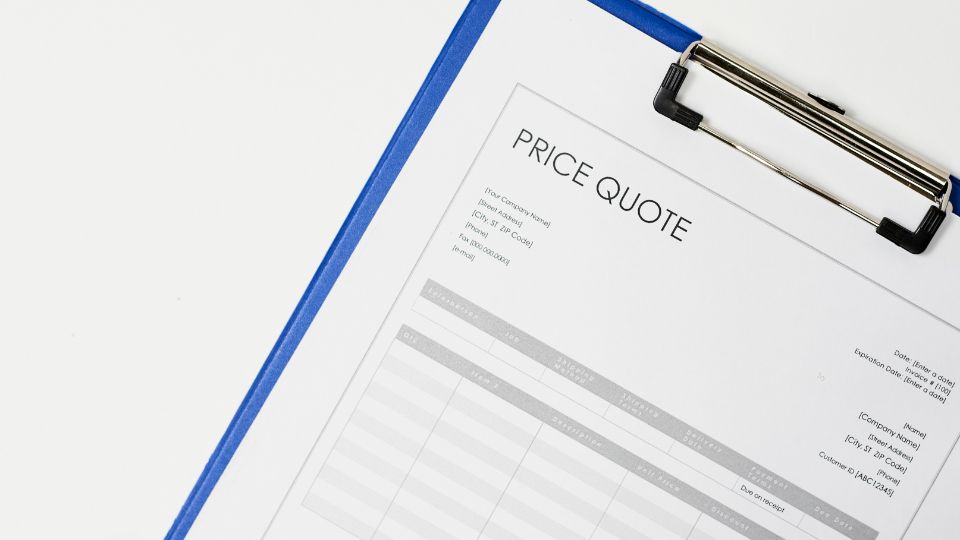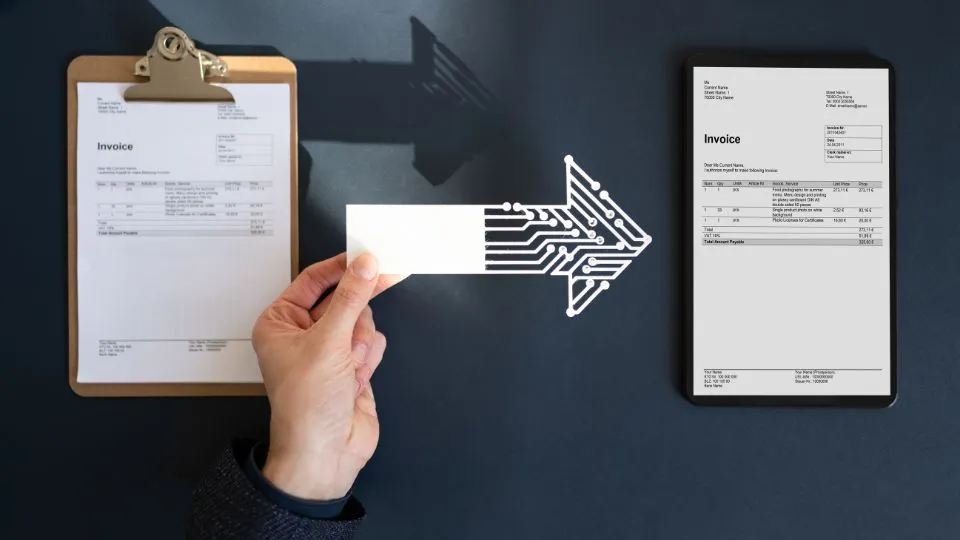Do you sometimes feel you are paying more for shipping than you should? If you’re wondering why you pay high rates for shipping, you’re not alone.
Here is the reality of freight forwarding.
Transportation costs typically go from 5% to 10% of total product’s cost. That’s right – out of every $100 your customer pays, $10 goes to shipping.
The good news is – we can save that money. Let’s hear out the example.
A major retailer, FedEx Freight saved $7 million annually by optimizing its LTL (Less Than Truckload).
How?
FedEx combined shipments and calculated the total shipping volume, which helped them negotiate the freight rates. Isn’t it impressive?
In this article, we will learn everything about freight quotes and share tips for analyzing freight forwarding quotes.
You will find valuable insights to optimize better quotes, whether you’re new to the industry or an experienced forwarder.
Let’s begin the journey.
What is a Freight Forwarding Quote and Why is it Important?

A freight quote is an estimate of all the costs that a delivery carrier will charge for shipping your goods.
It is calculated using the detailed information provided by the consignor. The weight and dimensions of the goods, ports of origin, and destination of the shipments are some of the information required to decide a freight forwarding quote.
In short, freight forwarding quotes give you a glimpse at your shipping costs before finalizing the total cost of your freight.
It allows you to compare options for different modes and prices of shipping. Most importantly, it helps you negotiate better freight rates for clients.
Before moving forward, let’s learn more about different types of freight quotes and their validity period.
| Types | Meaning | Validity |
| Spot quote | One-time quotes for immediate or short-term shipping needs. | 1-7 days |
| LTL (Less Than Truckload) | Quotes for shipments that don’t need the entire truck space. | 7-30 days |
| FCL (Full Container Load) | Quotes for full truck shipments | 7-30 days |
| Air Freight Quote | Rates estimated for air shipments | 1-7 days based on the market volatility |
| Ocean Freight Quote | Rates for sea shipments | 7-30 days |
| Short term Contract | Rate for multiple shipments over a short period | 30-90 days |
| Long term contract | Fixed-rate for regular shipments over an extended time | 6-12 months |
| Volume Quote | Special rate offered for large volume shipments | 7-30 days |
| Project Quote | Custom rate for a specific project involving multiple shipments | Varies based on the duration of the project |
| Instant Quote | Automated quotes generated by online tools | valid for immediate booking only |
Without further ado, let’s look into some of the key elements that you need to keep in mind before creating freight quotes.
Key Elements for Freight Quotes Requests

Have you ever tried to build something new, without any instructions? Feels very daunting right?
Having a clear understanding of the different elements of freight quotes functions as a set of instructions that help you in making strategic plans and informed decisions effectively.
So, let’s explore more about the key elements necessary for requesting the best freight quotes.
1. Clear and Complete Shipment Information
You need to collect all details about your shipments, including their weight, volume, and full dimensions, before evaluating accurate freight quotes. Make sure you have all the information related to:
- The nature of goods and HS codes to provide proper classification during customs clearance.
- Specifications related to packaging of fragile or dangerous goods to identify the risks that the goods may pose during transit.
2. Define Your Shipping Requirements
Be clear about the mode of transportation.
You need to decide whether the quote is for Less than Load (LTL), ocean, air, or truck freight. Each mode of shipping has its requirements based on the nature of the cargo.
For example, LTL freight quotes may depend on the density of the goods, whereas ocean freight quotes include options for Full Container Load (FCL) or Less than Container Load (LCL).
On the other hand, if your shipment weighs more and needs bigger space, the carrier offers you air freight quotes. Truck freight quotes however are decided based on the type of truck required for the transportation of your shipment.
3. Understanding Your Trade Contract and Incoterms
Make sure to read through all the fine print and Incoterms mentioned in the trade contract, before accepting any business propositions.
Incoterms determine the duties and responsibilities of all the parties involved in the shipping process. It contract safeguards you, from future disputes.
To put it in simple words, Incoterms helps you determine who is responsible for each part of the shipping process, including the risks and costs incurred.
How to Analyze Freight Quotes?

Learning to review freight quotes is like solving a puzzle, where every piece matters. It is a valuable skill developed through many years of hands-on experience.
Once you receive a freight quote, it’s important to evaluate them carefully. Here, we have listed some steps to help you analyze freight quotes effectively.
1. Break Down Different Components of the Received Freight Forwarding Quote
Gather as much information as you can about different components of the freight quotes, including base rate costs, customs fees, container fees, surcharges, and other additional fees. Compare them with other quotes and ask in detail about any charges that you don’t understand.
2. Understand the Pricing Structure
The transportation costs of freight vary depending on the types of shipments.
For instance. LTL freight quotes are calculated based on the weight of your cargo mostly per hundred pound rate or the hundredweight (CWT).
Whereas ocean freight quotes are estimated as per container volume or cubic meter.
On the other hand, air freight quotes are typically charged based on weight or per pound, while truck freight quotes are estimated as per mile or a flat rate.
3. Evaluate Transit Times and Routing Options
Let’s give some thought. Just because you can reach the destination faster, doesn’t mean we should rush. The same applies to transit times.
First, check the estimated delivery time for each quote, and then choose the one that provides you with cost-effective routing options.
Keep alternate route plans ready along with different modes of transportation. Make sure to choose a route, that avoids potential delays and doesn’t impact the transit time.
You can ask for real-time tracking options for each route, to evaluate the freight forwarding rates effectively.
4. Compare Freight Quotes
Create a sheet where you can compare quotes from different carriers side-by-side. Check if the quotes are guaranteed because there is a chance that some quotes may change before shipping.
You can examine hidden costs like fuel surcharges and handling fees before making a decision.
Now that we have developed an understanding of freight quotes and ways to analyze them, here are some tips that may help you gain the upper hand while negotiating competitive quotes.
Tips for Negotiating Competitive Freight Quotes

1. Optimize Cargo Packaging
Efficient packaging can affect the dimensional weight of the shipment, thereby reducing its total costs.
Use the right material for packaging and container for the goods. Position your goods properly to efficiently save more space and avoid overpackaging.
2. Time Your Negotiations
Approach reliable carriers when they are less busy or during the holiday season. Many carriers offer better capacity options after the holiday rush. January and February can be good months to negotiate better freight quotes.
Negotiate at least two months before your current contract ends. Moreover, this will give you sufficient time to further discuss different carrier options.
3. Balancing Cost Savings with Service Quality
Don’t let the cost-saving strategy affect the quality of your service. Happy customers make a happy business.
Never compromise on transit time or reliability to save money. This will directly affect your customer service.
Try to maintain a balance between affordability and dependable service. Maintaining quality and consistency in service will help you enhance your customer support in times of crisis.
Optimizing freight quotes can be tricky. All of us have gone through the same feeling of frustration – staring at a quote, scratching our heads, and wondering if we’re missing something.
Let’s understand how we can overcome these common issues.
Common Challenges Faced and Ways to Overcome Them

1. Never Overlook Fine Print and Terms & Conditions
Read every minute detail in the trade contract to avoid surprises later. The fine print may include information about costs that were not discussed in the initial quote. So, do not hesitate to question and clear any doubt before entering into a contract.
2. Incomplete Incoterms
Incoterms form the most important aspect in collecting your initial data about quotes. Make sure that you clearly understand what you’re asked and responsible for in the contract. Also, ensure that the exact Incoterms are clearly defined in the freight quote.
3. Avoiding Seasonal Variations
Research about how peak seasons affect different freight types. Freight volume and costs increase during peak season due to the higher demand for goods. Make sure that you remember to discuss and include seasonal variations before finalizing the quotes.
4. Neglecting Cargo Insurance
This insurance ensures the safety of your goods against any risks including theft, natural disasters, and geopolitical situations. Your agreements with buyers might require cargo insurance. You need to review your insurance policy and keep it updated. Ignoring this can lead to potential delays and financial losses.
Advanced Techniques for Freight Quotes Optimization

With emerging technologies and digitalization, the shipping industry has witnessed enhanced transparency and efficiency in the quote process.
Using these techniques can help you reduce costs considerably.
Here are some of the prominent ones:
- Implement the RFQ or Request for Quotation process to get more cost-effective freight quotes from multiple providers.
- Collect and analyze historical shipping data to identify the latest trends.
- Try to implement freight audit services to regularly check your invoices against freight contracts and actual shipments.
- Utilize real-time tracking tools to gain better visibility of the cargo and avoid probable delays in your shipments.
Conclusion
Understanding the fine distinction between different freight types and following the tips explored in this article can significantly improve your shipping efficiency while reducing costs.
Here’s what you can do going forward:
- Start by comparing your last three freight quotes and review them using the tips that we have learned. You can also request and then compare favorable freight quotes for your shipments.
- Make a list of probable questions you need to ask your freight forwarder.
- Maintain a spreadsheet to keep track of your shipping costs, no matter how small or minute that detail is.
If you are a small freight forwarder looking to create accurate quotes in minutes, check out SeaRates ERP or book a free demo today.
Frequently Asked Questions
1. What information do I need to provide to get the most accurate freight quote?
To receive the most accurate freight quote, you should provide:
- Exact dimensions, weight, and type of cargo.
- Origin and destination addresses, including zip/postal codes
- Preferred shipping date with any delivery deadlines
- Details about special handling requirements like temperature-controlled or fragile items.
- Incoterms agreed upon with your supplier or clients
- Any additional services such as customs clearance or cargo insurance.
The more specific your information is the more accurate your quote will be.
2. How can I compare different freight quotes effectively?
To compare freight quotes effectively:
- Ensure all quotes are based on the same shipment details and services
- Consider additional charges like surcharges and fees, along with the base rate.
- Compare transit times and routing options
- Analyze the reputation and reliability of each carrier
- Check the validity period of each quote
- Assess the terms and conditions, including risk coverage and claim processes
You need to consider the total freight quote, including all additional charges before making any decision.
3. What are some effective strategies for negotiating better freight rates?
To negotiate better freight rates:
- Do your Research thoroughly on current market rates and trends
- Consider longer-term contracts for more favorable pricing
- Be flexible with shipping dates if possible, as this can lead to cost savings
- Ask about volume discounts or consolidation opportunities
- Discuss value-added services that might be included at no extra cost
- Build relationships with carriers for potential long-term benefits
Remember, negotiation is about finding a balance between cost saving and customer satisfaction. Be reasonable in your requests and open to compromise.
4. What are some common mistakes to avoid when dealing with freight forwarding quotes?
Common mistakes to avoid when dealing with freight forwarding quotes include:
- Focusing only on the base rate and not including additional fees and surcharges
- Providing incomplete cargo details, leading to additional charges
- Overlooking the fine print in contracts, including terms and conditions
- Not considering cargo insurance
- Choosing a forwarder based on price alone, without evaluating its credibility and service quality
- Not considering the total landed cost, including duties and taxes
- Ignoring seasonal variations in shipping rates and capacity
By avoiding these pitfalls, you can ensure a smooth shipping process and a more accurate budget plan for your freight costs.








